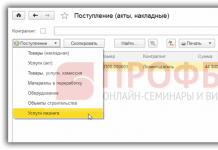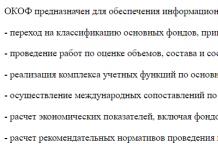INSULATING FLANGE CONNECTIONS
The RECOM pipeline parts plant produces insulating flange connections according to TU 3799-005-31049454-2009. IFS produced by the RECOM plant are guaranteed to provide electrical insulation of one section of the pipeline from another in order to counteract electrochemical corrosion.
PURPOSE OF INSULATING FLANGE CONNECTIONS (IFS)
They are used to ensure the protective electrical potential of electrochemical protection installations (cathode electrochemical protection) of gas distribution stations (points) of gas distribution stations (GRS). They provide interruption of the flow of electric current through pipelines (electrical conductivity), also to protect various underground communications from electrocorrosion. Placed outdoors on pipelines at the inlet and outlet of gas distribution stations (GRS) buildings, residential buildings in various climatic zones.
The design of the IFS consists of two flanges, an insulating gasket between them, insulating bushings that are installed in the mounting holes, as well as studs, nuts, and insulating washers.
TECHNICAL CHARACTERISTICS OF IFS
| Maximum permissible pressure (no more, MPa) | 10,0 |
| Conditional diameter, DN |
20...1200 |
|
Working environment |
Fresh and superheated water, saturated and superheated steam, air, inert gases, natural gas and LPG, heavy and light petroleum products, oils |
| Working environment temperature, no more than °C | +350°С |
| Material execution |
Steel 20, 09G2S, 12Х18Н10Т, VT 0.1 |
| Climatic version according to GOST 15150-69 | У1 (-40°С...+40°С) HL1 (-60°С...+40°С) |
| Water absorption of insulating materials | no more than 0.01% |
| Dielectricity of the insulating gasket in a dry state, Ohm |
0,2*106 |
| Dielectricity of the insulating gasket in a wet state, Ohm |
10*103 |
CLASSIFICATION OF IFS PRODUCED BY ZDT REKOM LLC
| Options |
IFS classification |
||
| IFS type | Type 1-1 | Type 2-3 | Type 7-7 |
| Nominal pressure, MPa | up to 2.5 | up to 6.3 | up to 10.0 |
| Operating temperature, °C | no more than 300°С | ||
| Climatic performance | U/HL |
||
| Insulation resistance, KOhm |
200 |
||
| Flange design according to GOST 12815-80 | 1-1 | 2-3 | 7-7 |
1. Flanges according to GOST 12821 (version 1-1);
2. Insulating gasket;
3. Insulating bushings;
4. Insulating washer;
7. Nuts for flange connections GOST 9064;
2. IFS 2-3 up to 6.3 MPa (63 kgf/cm2)1. Flanges according to GOST 12821 (version 2-3);
2. Insulating gasket;
3. Insulating bushings;
4. Insulating washer;
5. Washers for flange connections GOST 9065;
6. Studs for flange connections GOST 9066;
3. IFS 7-7 up to Ru 10.0 MPa
1. Flanges according to GOST 12821 (version 7-7);
2. Insulating gasket;
3. Insulating bushings;
4. Insulating washer;
5. Washers for flange connections GOST 9065;
6. Studs for flange connections GOST 9066;
7. Nuts for flange connections GOST 9064.
In order to correctly place an order for the production of IFS at ZDT RECOM LLC, you must indicate in the application:
1. Product name – IFS;
2. Conditional diameter Dу, mm.;
3. Conditional pressure Ru, MPa (kgf/cm 2);
4. Brand of material – Art. 20, art. 09G2S, st. 12Х18Н10Т, st. 15Х5М, VT 1-0, etc.
Additionally:
1. Operating temperature, ºС;
2. Work environment.
IFS 50-63 2-3 Art. 20
IFS 50-16 1-1 Art. 20
IFS 50-160 7-7 Art. 20
If you are interested in purchasing IFS, you can fill out the terms of reference and send it to ZDT RECOM LLC.
Consequences of electrochemical corrosion on pipelines
Providing electrochemical protection is provided for by official documents:
VSN-009-88 – Departmental construction standards “Construction of main and field pipelines. Electrochemical protection means and installations."
GOST R 51164-98 – Main steel pipelines. General requirements for corrosion protection, etc.
In order to provide electrochemical protection, insulating connections are used on pipelines.
Stray currents pose a high danger to equipment, personnel and the gas pipeline itself. The main problem is that the section of the gas pipeline exposed to stray currents is impossible or extremely difficult to calculate in advance. Such impacts create the preconditions for the occurrence of destructive processes and disrupt the operation of control and measuring instruments.
Why are insulating connections used on a gas pipeline?
An insulating connection (IC) for a gas pipeline allows you to separate sections from each other and prevent the occurrence of electrochemical corrosion. It ensures breaks in the galvanic connection of gas pipeline sections and eliminates the possibility of initiating corrosion processes.
ICs cut off grounded areas from the common branch that are in contact with adjacent equipment or structural elements. The gas pipeline IC increases the resistance between sections to values that prevent further propagation of currents along the length of the gas pipeline.
Most often, the protective device takes the form of flange connections equipped with a dielectric gasket. It is allowed to use only units manufactured at specialized enterprises and having the appropriate certificates. It should be taken into account that the use of an insulating connection is a mandatory clause of the technical regulations, the violation of which entails various consequences, including criminal prosecution.
What are the types of insulating connections?
The most commonly used types of insulation are:
- flanged;
- one-piece;
- insulating rings made of paronite.
The most common type is the insulating flange connection. The design of such a unit is quite simple and reliable. It does not consist of 2 flanges, as usual, but of three - there is an average intermediate flange 16-20 mm thick.

Insulating rings made of paronite are installed between the flanges, which, in order to avoid impregnation with water and loss of dielectric properties, are coated with a special bakelite varnish. The tie is made with steel pins installed in fluoroplastic dielectric split bushings. A more modern insulation option is permanent connections, such as an insulating coupling. They are presented in various design options, different sizes, but have common specific qualities.
The most important of them should be considered the high durability of such ICs. They do not require maintenance and do not change their properties over time, whereas the insulating flange connection gradually loses its dielectric properties and requires restoration work.
All types of connections must have appropriate certificates and are produced at specialized enterprises. The use of homemade or uncertified devices is strictly prohibited.
Gas pipeline ICs are used in accordance with the electrical protection plan and are installed in compliance with all safety measures. At the same time, the protection should not have a harmful effect on adjacent structures: it is necessary to exclude the formation of electrochemical corrosion on adjacent elements of the system that previously did not require protection.
The optimal points for installing the gas pipeline IC are: 
- Entry or exit from the ground.
- Entrance or exit from a gas distribution point.
- Entry into an industrial facility (enterprise).
- Entry into a building with the possibility of contact with grounded elements.
- Inserting a gas pipeline into an object that is a source of stray currents.
- At gas pipeline branches, an IS is installed for each branch.
The use of IS is prohibited on open sections installed under balconies or doorways. In wells, the protection is bridged with a detachable electrical jumper. On above-ground sections of gas pipelines, it is necessary to install insulating connections at the entrances to buildings, on supports, overpasses or bridges. The use of insulation makes it possible to reduce the current density of electrochemical protection by 1.5–2 times.
Installation rules
The assembly of protection units is carried out in the factory. When installing a unit on an existing gas pipeline, all safety requirements and technical rules for working with gas installations must be observed.

The finished assembly is tested for resistance and tightness in the laboratory, about which a corresponding record is made. Installation is carried out by welding, after which the quality of electrical separation of the sections is checked. The evaluation criterion is the value of electrical resistance, which must be at least 5 ohms and provide a voltage drop of at least 5 mV when measured at different ends of the flanges.
The finished connection is isolated from possible contact with the ground or structural elements using aprons, boxes or similar means.
Acceptance of an insulating connection into operation is documented by a corresponding entry in the journal and a certificate.
The connections are designed to operate in the range from residual pressure (vacuum) of 0.001 MPa to excess pressure of the environment not higher than 25.0 MPa, the minimum temperature of the working environment is not lower than – 60 ºС and the maximum temperature of the working environment is not higher than + 260 ºС.
The scope of application of IFS is pipelines in the chemical, petrochemical, petroleum, oil refining, gas and other related industries, transporting gaseous, vaporous and liquid media.
In terms of resistance to environmental climatic factors, devices must comply with UHL versions, placement category 1 according to GOST 15150.
Connections must be designed for installation in geographic areas with seismicity up to 8 points inclusive on the 12-point scale adopted in the Russian Federation in accordance with SNiP II-7.
The connections must relate to specific purpose products (IKN), type 1, refurbishable, in accordance with GOST 27.003.
Design and manufacture of IFS
An insulating flange connection consists of two or three flanges, between which insulating seals are embedded. The flanges are connected to each other using studs and bolts. The studs are separated from the flanges by PTFE bushings or, alternatively, by heat-shrinkable tubes made of the same material. Nuts and washers are insulated from the flanges with fiberglass in accordance with GOST 12652-74. To enable connection of electrical measuring instruments to the system, the connections have screw connections. You can even connect a spark charger through it.
IFS design with two flanges
- 1 - flange;
- 2 - insulating gasket (PTFE);
- 3 - pipe;
- 4 - nut;
- 5 - hairpin;
- 6 - metal washer;
- 7 - insulating washer (fiberglass);
- 8 – insulating sleeve (PTFE). IFS design with intermediate flange
- 1, 2 - flanges;
- 3 - pipe,
- 4 – insulating gaskets (PTFE);
- 5 - hairpin;
- 6 - nut;
- 7 - metal washer,
- 8 - insulating washer (fiberglass);
- 9 - insulating sleeve (PTFE).
The IFS corresponds to the UHL climatic design for placement category 1 according to GOST 15150.
IFS must comply with the requirements of GOST 25660, GOST 12.2.003, GOST 12.2.049, the requirements of these technical specifications and a set of design documentation approved in the prescribed manner, as well as the requirements of regulatory and technical documentation of Rostechnadzor.
Isolating flange connections can perform their functions from any position. Their parameters for connection comply with the requirements established by GOST 12815, 12820 and 12821. The connections maintain parallelism with the sealing surface, deviating from it by only 0.2 millimeters for every 100 millimeters of length. The design of the IFS makes it possible to avoid accidental loosening of the fastening of both assembly units and assemblies. You will not find any sharp edges or burrs on the parts. There may only be small dents, sludge deposits or other minor imperfections on surfaces that have not yet been treated. However, no work media is allowed to pass through the connection points. All pressures used, both test and working, comply with the requirements of GOST 356.
Flange connections can withstand vibrations of 2 mm/s generated by external sources near the installation site. They are not afraid of parts and exposure to the external environment.
If the drawings do not indicate even more stringent requirements, then the maximum dimensional deviations should be calculated using the following formulas:
For mechanical surfaces machinable: holes H14, shafts H14 ( sign)
For non-machined surfaces, as well as at the joints between treated and untreated, is calculated based on the table below.
The mass of the flange connection has minimal error. From the figure indicated in the drawings for dimensions, the final value differs by 10% up or down. Threaded connections are made in accordance with GOST 24705, GOST 9150, GOST 16093. As for the thread accuracy class, according to GOST 16093 it will not be lower than coarse. The other thread will be exceptionally full and clean. Here you will not find burrs, cut ridges or unpleasant dents. The flanges are manufactured in compliance with the requirements of GOST 12820, GOST 12821, GOST 12815.
The insulating flange connections are assembled so well that the ends of the bolts and studs extend outward by just one thread pitch, or even less. The flanges also have holes for bolts and studs. They are located symmetrically on both flanges. On parts that require machining, all burrs are removed in advance, and sharp edges with a radius of 0.2-0.4 mm are blunted, unless otherwise indicated.
The need to install insulating connections (IS) for the gas pipeline.
A high danger to equipment, personnel and the gas pipeline itself are stray currents. The main problem is that the section of the gas pipeline exposed to stray currents is impossible or extremely difficult to calculate in advance. Such impacts create the preconditions for the occurrence of destructive processes and disrupt the operation of control and measuring instruments.
Divide the areas between each other and eliminate the appearance electrochemical corrosion allows an insulating connection (IC) for a gas pipeline. It ensures breaks in the galvanic connection of gas pipeline sections and eliminates the possibility of initiating corrosion processes. ICs cut off grounded areas from the common branch that are in contact with adjacent equipment or structural elements. The gas pipeline IC increases the resistance between sections to values that prevent further propagation of currents along the length of the gas pipeline. It is allowed to use only units manufactured at specialized enterprises and having the appropriate certificates. Each product must have a passport. The use of an insulating connection is a mandatory point of the technical regulations.
Insulating connection (IS, IFS, ISSG, ISM) - a product intended for dielectric separation (sectioning) of a gas pipeline into adjacent sections in order to exclude (limit) the flow of electric current between them.
ICs are an additional means of protecting underground gas pipelines from electrochemical corrosion in addition to passive and active protection and are recommended for:
Electrical separation of underground gas pipelines into separate sections, which increases the efficiency of their electrochemical protection;
Electrical isolation of sections of underground gas pipelines from poorly insulated or grounded areas;
Preventing the formation and action of macrogalvanic corrosive couples that occur at the contact areas of gas pipelines and structures made of various metals;
Elimination of protective current flow into sections of gas pipelines where electrochemical protection is impossible for safety reasons;
Increasing the longitudinal resistance of underground gas pipelines, along which stray currents are likely to spread;
Saving energy costs.
Using IS allows you to:
Reduce the current density of electrochemical protection by 1.5 - 2 times;
Increase the coverage area of the protective installation while simultaneously reducing its power.
It is advisable to install the IS:
On newly constructed gas pipelines, if necessary, their cathodic polarization in accordance with the standards;
On existing gas pipelines, if their cathodic protection is ineffective or they are subject to major repairs.
The IS should not have a harmful effect on adjacent underground structures or on “cut-off” sections of the gas pipeline:
Reduce or increase in absolute value the minimum and maximum values of protective potentials on adjacent metal structures that have cathodic polarization;
Cause electrochemical corrosion on adjacent underground metal structures that previously did not require protection.
Installation of the IC is required in the ECP coverage area:
The entry and exit of the gas pipeline from the ground;
The entrance and exit of the underground gas pipeline from the hydraulic fracturing station (SRP);
Introducing gas pipelines into a building where the gas pipeline can come into contact with the ground through grounded metal structures, building utilities and neutral conductors of the building's electrical wiring; entering a gas pipeline to an industrial enterprise;
Introducing a gas pipeline to an object that is a source of stray currents.
IC is also installed for sectioning gas pipelines and electrically isolating individual sections of the gas pipeline from the rest of the gas pipeline. If the spreading resistance of the ground loop of hydraulic fracturing or underground LPG tanks is more than five (5) Ohms, IS may not be installed on gas pipelines. When transitioning an underground gas pipeline to an above-ground one, it is allowed, instead of installing an IS, to use electrical insulation of gas pipelines from supports and structures with insulating gaskets.
IS is prohibited from being installed on sections of gas pipelines laid under doorways and balconies. When laying gas pipeline inlets along the outer walls of brick buildings, ICs are installed on branches to individual consumers (risers of the entrances of residential buildings). When laying gas supply pipelines along the outer walls of reinforced concrete buildings or when laying gas pipelines along supports, bridges or overpasses, ICs are installed at the entrances and exits of the gas pipeline from the ground.
Installation of IS should be provided on above-ground sections of gas pipelines (at inputs to industrial and utility enterprises, buildings, as well as on supports, bridges and overpasses). ICs can be installed on underground inputs in special wells. The well must have reliable waterproofing and be dry.
When placed in wells, the IC must be bridged with a permanent detachable electrical jumper. The jumper contact connections should be provided outside the well. Magnesium and (or) zinc protectors can be used as a current conductor, which, in addition, protect the gas pipeline in the anodic zones at the insulating connections and protect them from breakdown in the event of high voltage entering the pipeline.
Installation of IC
ICs are installed in areas specified in electrical protection projects. The main installation requirements are as follows:
The cross-section of the pipes should be in the range of 20-1400 mm.
Excessive pressure of liquid or gas inside the system is up to 7 MPa. In cases where the purpose of the pipeline is not industrial, but domestic, insulating and small-sized flange connections are used that can withstand operating pressure up to 1.6 MPa.
The temperature regime of the internal environment is -60 to +180 °C.
Humidity - up to 100%, subject to an average temperature of 25 °C.
Electrical resistance - from 5 mOhm.
After installation, before switching on the electrical protection, the IC is checked for the absence of a short circuit between the metal ends of the pipes on both sides of the IC, and the electrical insulating flanges are additionally checked between the coupling bolts and the metal flanges.
ICs must be protected from the external environment (aprons, boxes, etc.).
IP operation
Operation, incl. periodic technical inspection of the IS is carried out by specialized offices "Podzemmetallzaschita" or protection services (groups), laboratories and departments of gas industry enterprises, which have the necessary staff of specialists trained and approved for these types of work. Information systems on gas pipelines owned by enterprises and organizations must be serviced by the forces and resources of these enterprises (departments) or specialized organizations under contracts for work.
When operating an IS, it is necessary to systematically, at least once a year:
Check the serviceability (efficiency) of the IS operation;
Measure and, if necessary, adjust the current in the shunt jumpers;
Determine the spreading resistance of down conductors.
Types of insulating connections
There are IPs flanged(IFS) And wafer (IC-welded, ISSG-surges, ISM couplings). The most popular are flanged models, the design of which includes insulating gaskets (rings, bushings), pipes, flanges, studs, nuts and washers. Wafer types have threads for connection with mating parts or elements for the possibility of welding the IC to the pipeline. ICs of the second type also have a number of advantages for which they do not lose their relevance: resistance to deformation, stability of the dielectric background for up to 30 years, low price. ICs are distinguished by installation method one-piece And detachable type.




















